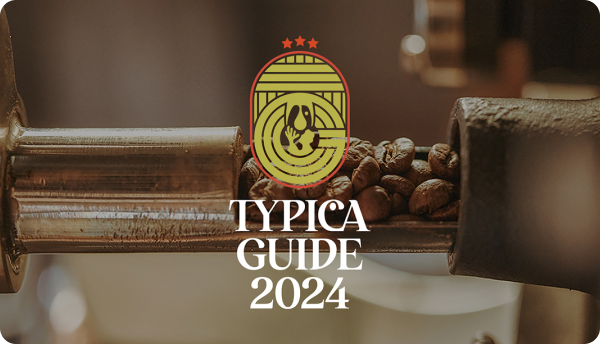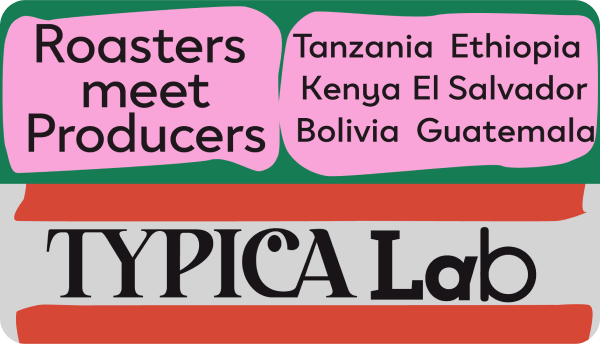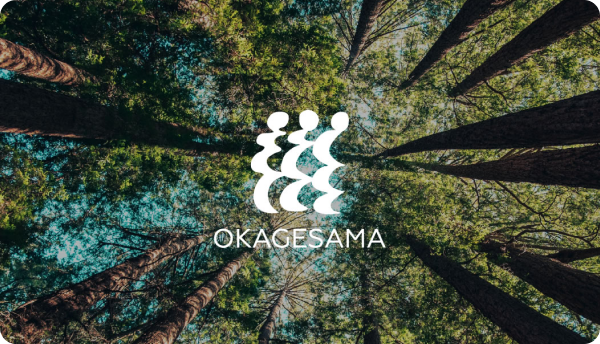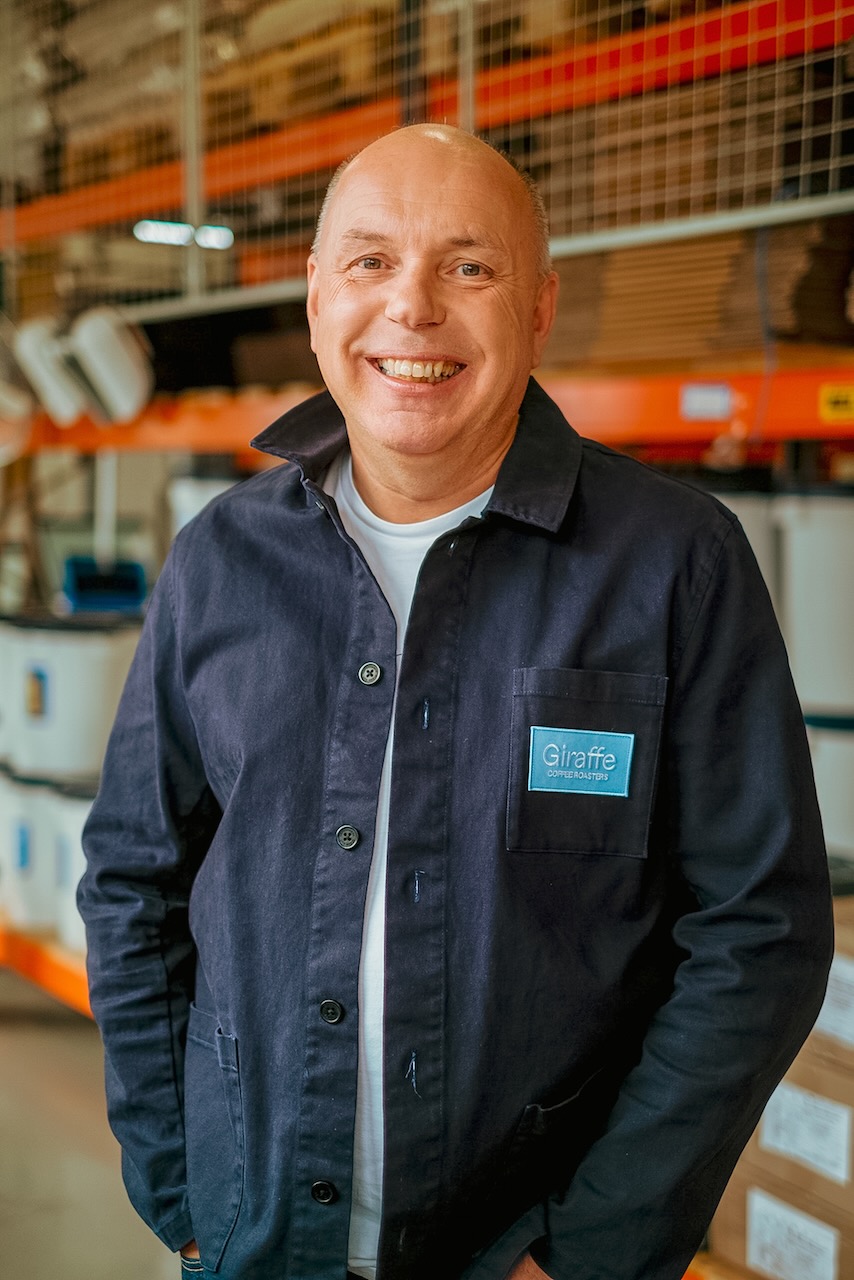
Dazzling World of Coffees, Guided by Taste Concierge
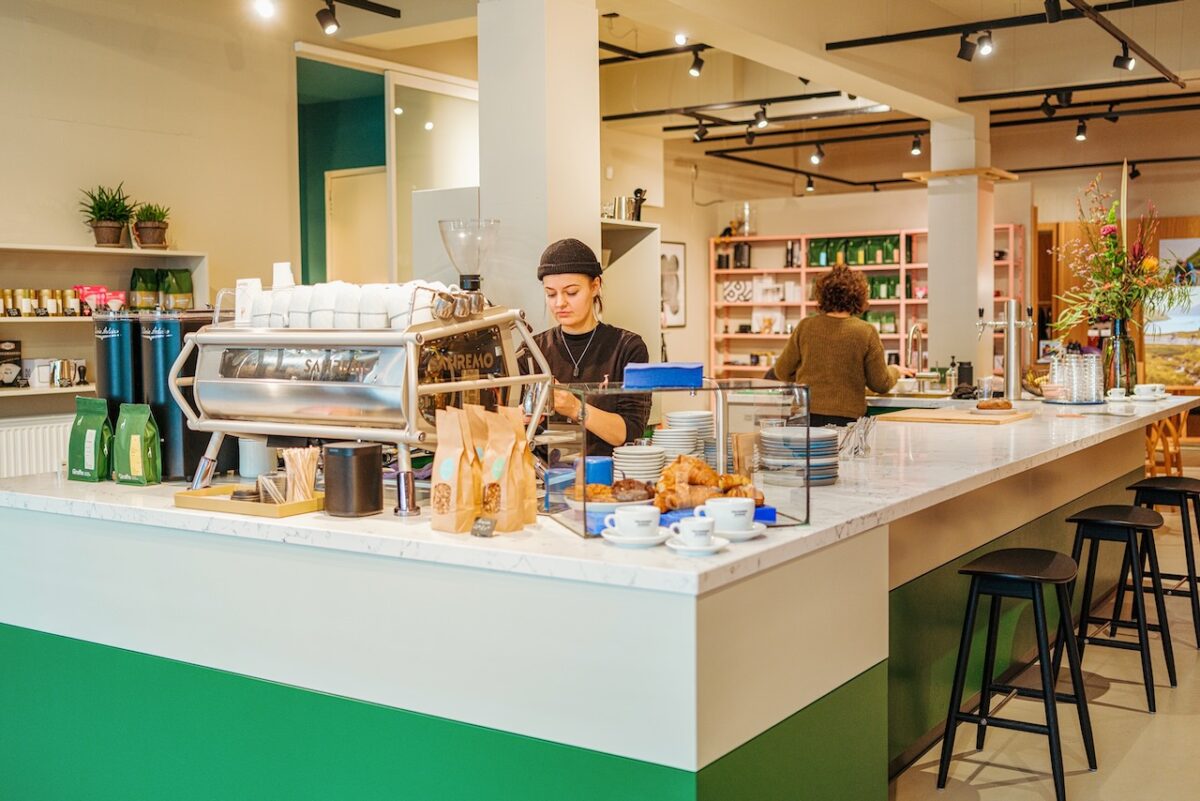
Rotterdam, the second largest city in the Netherlands, is a hotbed of creativity. With its streets lined with modern buildings, this metropolis contrasts with the capital Amsterdam, where tradition remains alive and well. Giraffe Coffee Roasters has called this city home since 2013, running a roastery, coffee bar and coffee academy, in an effort to introduce people to the highest quality of coffees.
Giraffe Coffee was co-founded by Maarten van der Jagt, 55, and Mark Jordaan, 34. Having a background in food journalism, Maarten has served as a judge for the World Barista Championship. We’ve spoken to Maarten, who entered the coffee industry in his mid-40’s, to find out what he pursues at Giraffe Coffee, with team members generations his junior.
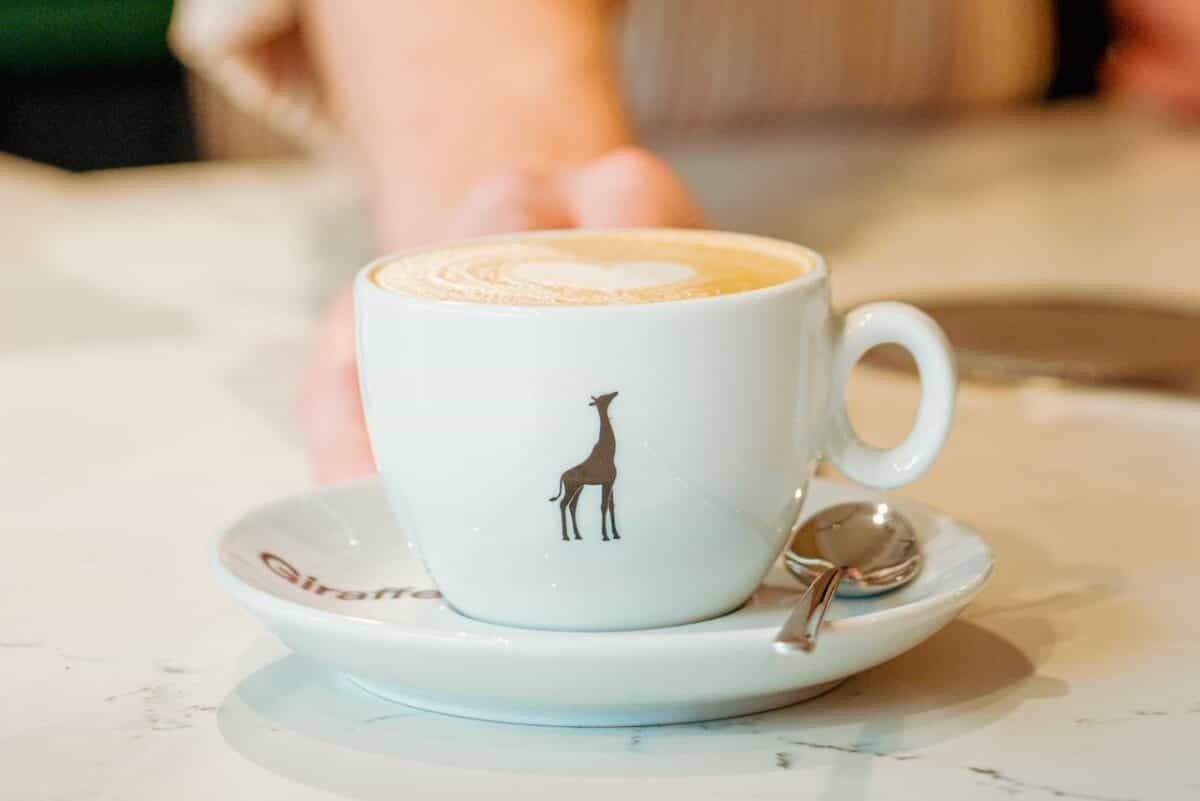
Craftsmanship at its best
The giraffe, the icon of the roastery, is considered the gourmet of the savannas, for the animal picks only the most delicious acacia leaves. Meanwhile, when it comes to coffee, the higher the altitude of a farm is, the better its coffee will be. “Giraffe” in the roastery’s name is a mission statement to “find the gem of highest-quality coffee in a place nobody else can reach,” Maarten says.
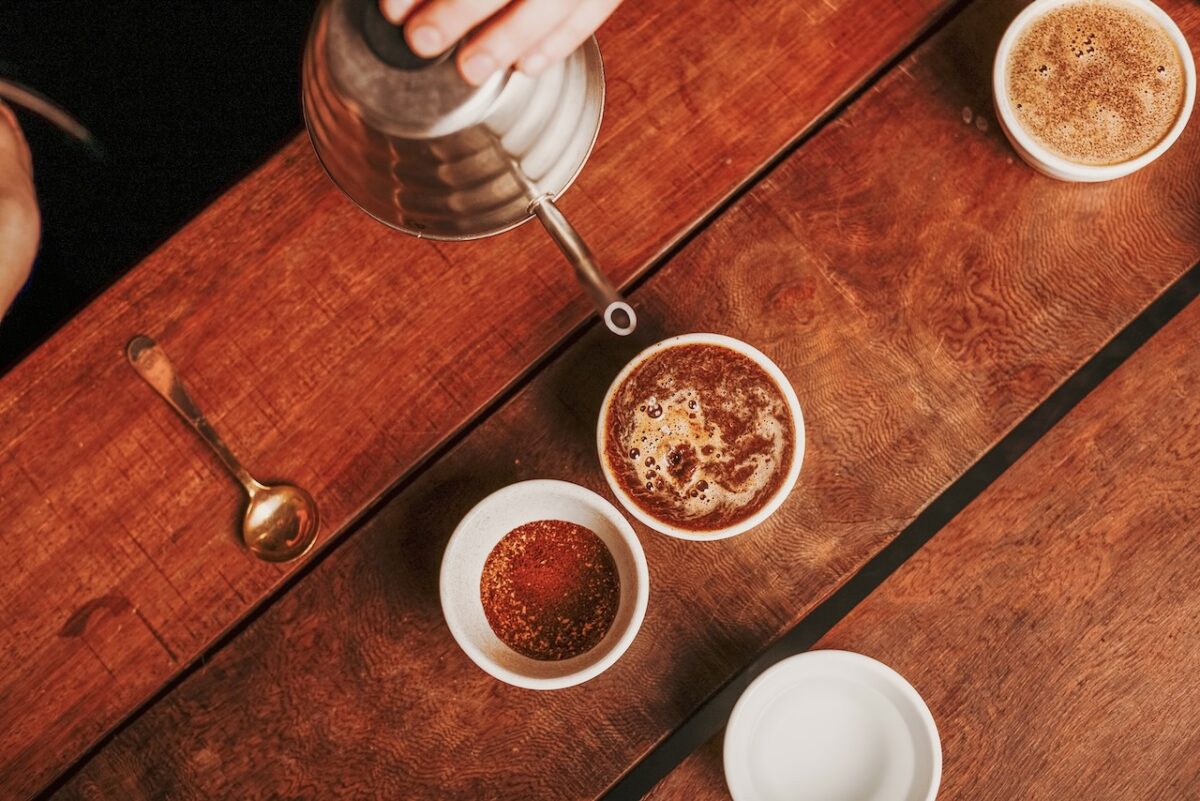
One thing that characterizes Giraffe Coffee is a weekly cupping session on Wednesday mornings. The roastery goes about this blind cupping with the intensity of “a small competition,” as Maarten puts it. On this occasion, the staff check the roasting of all coffee beans and update profiles every week.
“The conditions of coffee are never static. A lot of variables from green and its shelf life to the changing climatic conditions in every season. Leave it in the roasting machine three seconds longer, and its taste changes. That’s why we try to find the best roasting by placing one profile against another. Roasters themselves also join the cupping. That way, they can figure out how they should roast, as well as how the heat and roasting time affect taste.”
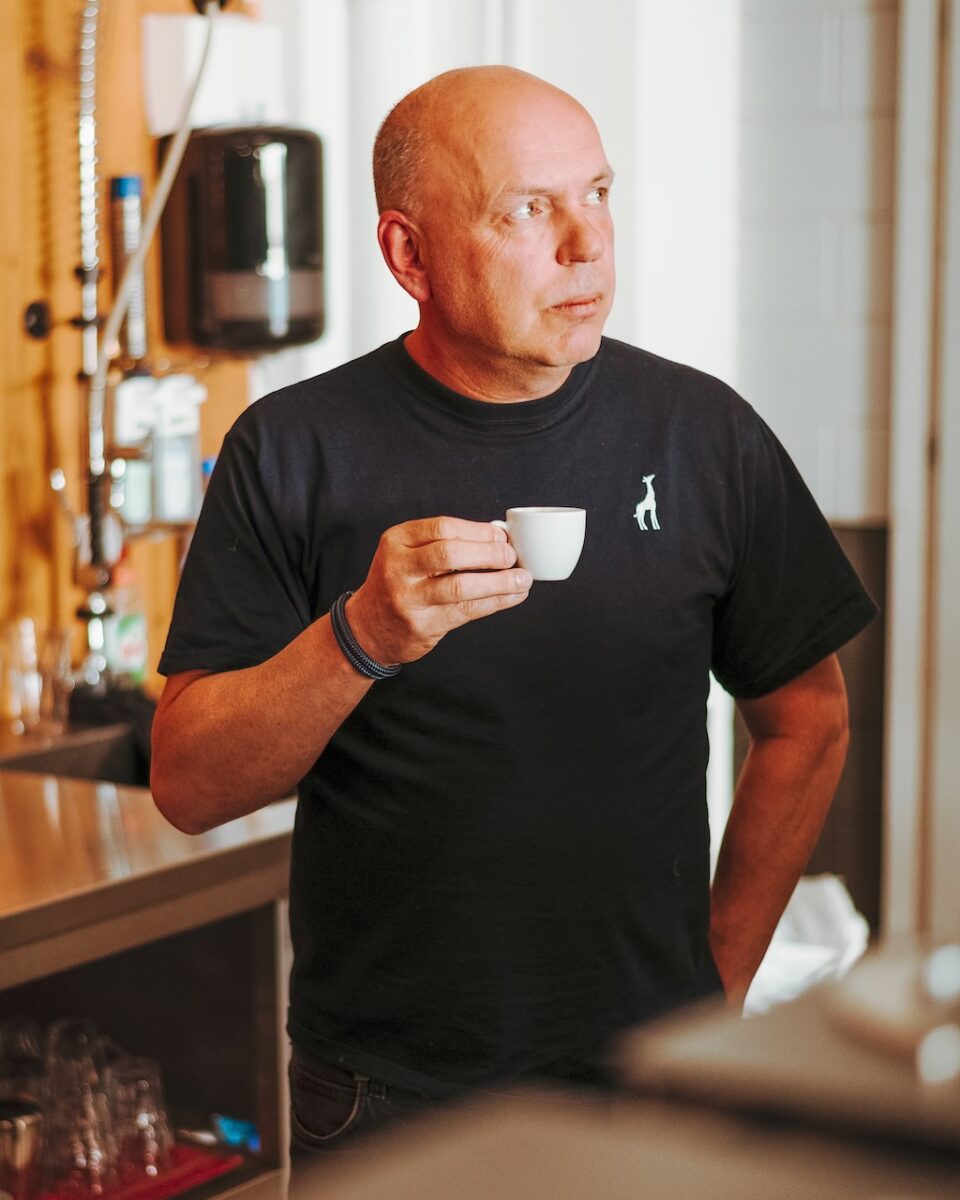
According to Maarten, Kenyan coffee is “so difficult to roast that it’s like a fighting bull released into the ring.” Even when dealing with beans from the same country, he and his team vary roasting profiles across different coffees to best express their terroir. Through this meticulous act of fine-tuning, Giraffe Coffee seeks better coffee experience day after day.
Maarten stresses that without craftsmanship and a lot of hard work, you can’t produce an extraordinary cup of coffee – a cup that reaches the level of artistry and the moment where it’s just you and the coffee. Maarten stays down to earth: “In interviews with chefs, writers often focus on their inspirational and creative aspects as if craftspeople were artists. But that’s not true. 99% of their job is craftsmanship. Your work reaches artistry only when you keep honing your craft and achieve true excellence. In our line of work, the truth is in the cup in front of us.”
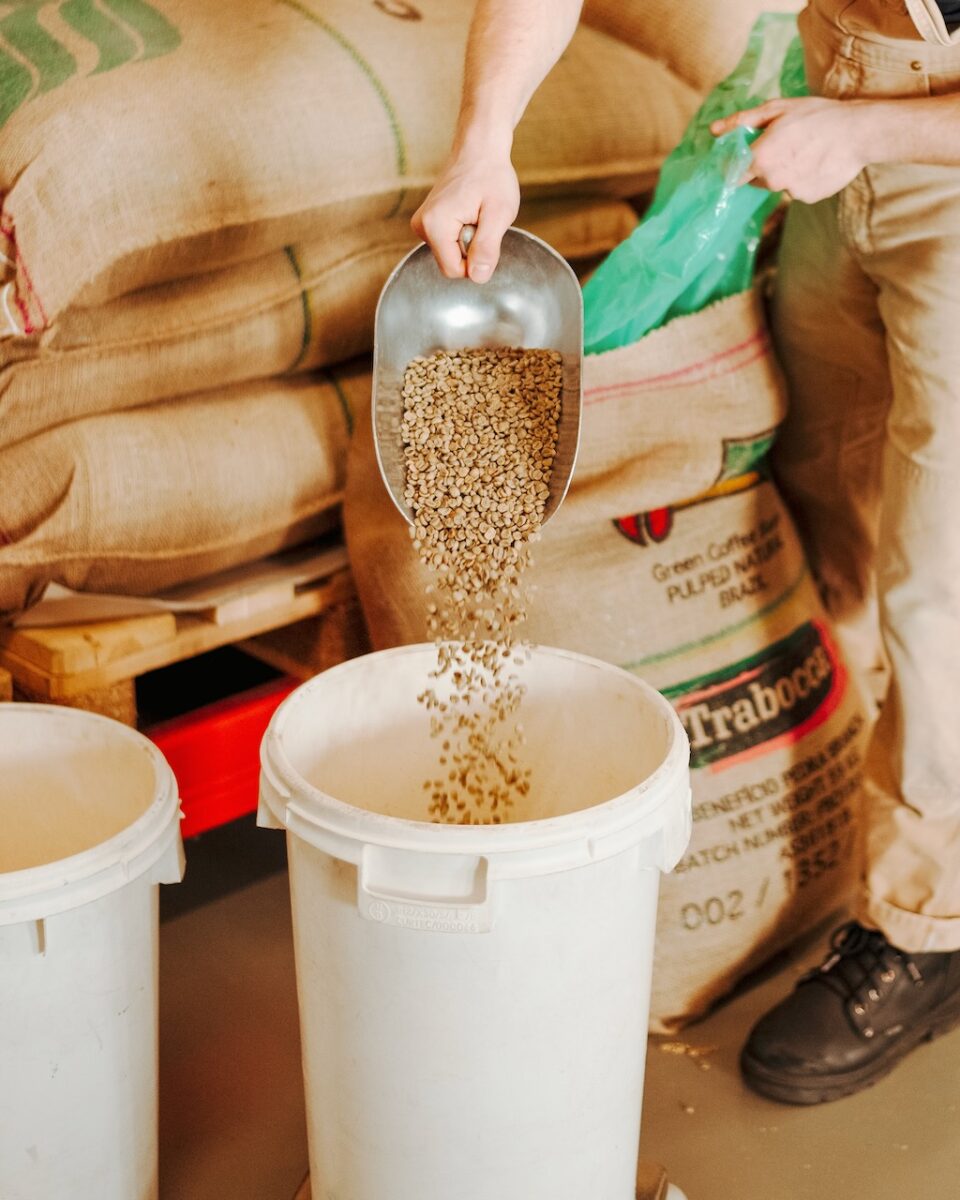
Maarten’s uncompromising work ethic seeps into the sourcing of green coffee. Every now and then, producers and importers approach him with samples, only to be met with a barrage of questions like, “Who are the producers?” “Are the samples graded by a Q-grader?” “Not only how, but how exactly is the coffee processed?” Many of those vendors fail to meet Maarten’s standards and eventually give up, daunted by how picky he is.
“For me, delicious coffee has to be clean, free of taints, and fresh. As mentioned before, I’m aware of the shelf life of coffees all over the world. So I don’t source large quantities at a time. For instance, I buy only four months’ worth of Guatemalan coffee. So people are often disappointed in me for that.
When I source for Giraffe, I look for a coffee that represents the traditional identity of its region and is processed in a typical method. If I buy Kenyan coffee, it has to be undoubtedly Kenyan.
In a few but extreme cases, some producers add artificial flavors to their coffees during processing, trying to pursue ‘specialness.’ But that completely destroys coffees’ identity. Blinded by that eagerness, they forget what makes coffee truly special. For me, specialty coffee is a coffee that expresses the distinctive character of its terroir that not only comes from nature but also from the producer. Coffee is not something waiting to be ‘discovered’ by the producer. The producer is an intrinsic part of the terroir and its identity.”

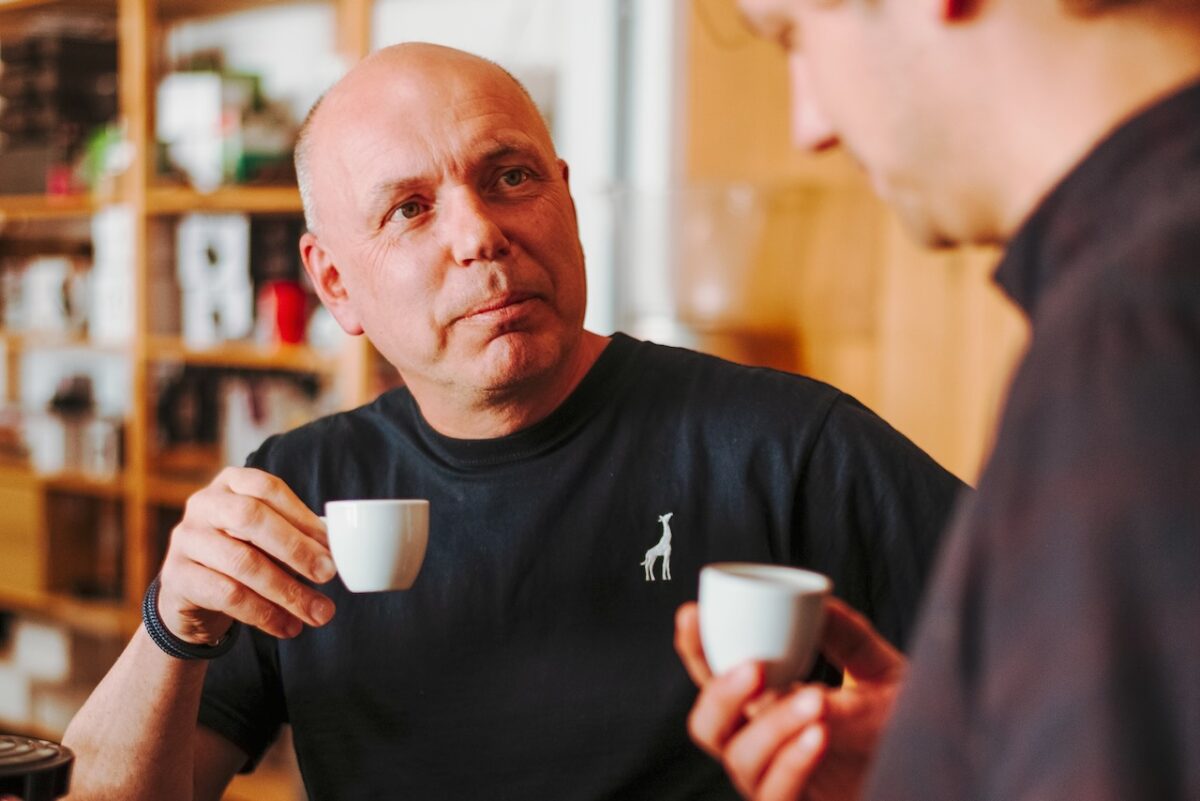
In pursuit of god shot
Maarten describes himself as having some traits of the millennial generation. After working in the IT sector for some 10 years, he switched to a food journalist when he was in his 30’s. During his nearly 15-year stint in journalism, he authored restaurant reviews and cook books. He had an established place in society. What drove Maarten to enter the coffee industry?
“I was fascinated by how coffee could have different flavors when I made it with an espresso machine. And even if I could create what I call a god shot, it was hard to replicate it. That difficulty made it all the more exciting to go after the god shot.”
An encounter with specialty coffee further ignited Maarten’s curiosity.
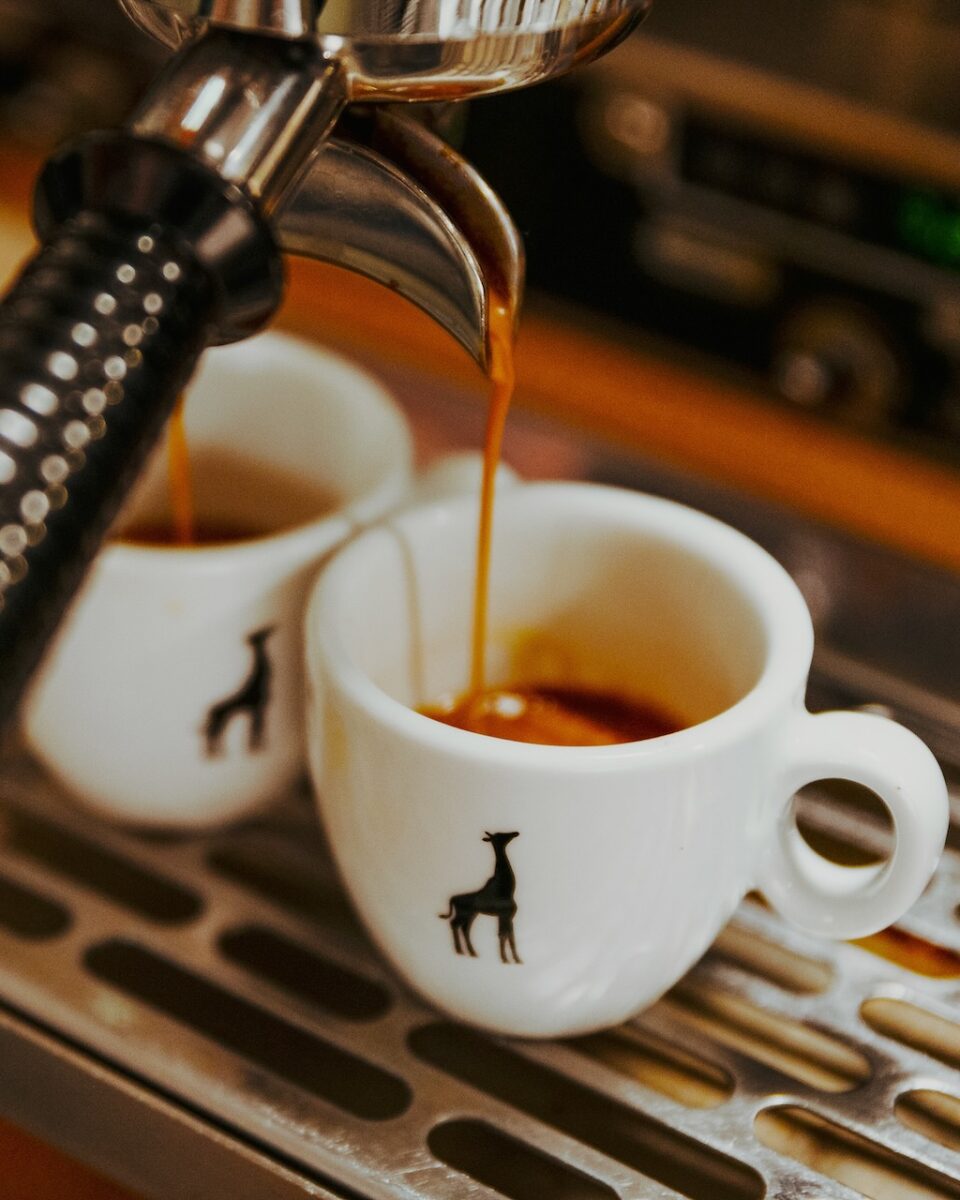
Maarten once penned a piece about how to make delicious espresso at restaurants. The article explained that the coffee supply chain ends at brewing, so solid skills are essential because one mistake can ruin it all. The message was “a cliche,” he says, written by a coffee lover who just enjoys espresso at home.
But to the uninitiated in the coffee industry, the information was eye-opening. After the article was published, inquiries kept pouring in, asking for his expertise on how to use espresso machines. This turn of events ultimately launched his career in coffee, catapulting him to the panel of judges at the Dutch and Belgium Barista Championship.
“It was an emotional experience being at the championship, to see everything from the best coffees and the best brewing techniques to the people who pursue the best espresso. When you are at an international competition, chances are you get to taste an exceptional coffee that gives you goosebumps and causes the hairs on the back of your neck to rise. Delicious coffee has layers of acidity, sweetness and depth. I learned the smallest differences between coffees for the first time at the event.”
Maarten went on to become editor-in-chief for a coffee magazine. The job took him on tours to report on coffee scenes worldwide, from Sydney to Melbourne, Seattle to Vienna, Istanbul to London. And what Maarten saw was a wave of specialty coffee roasters cropping up around the world. He began to feel an itch to take the plunge into specialty coffee.

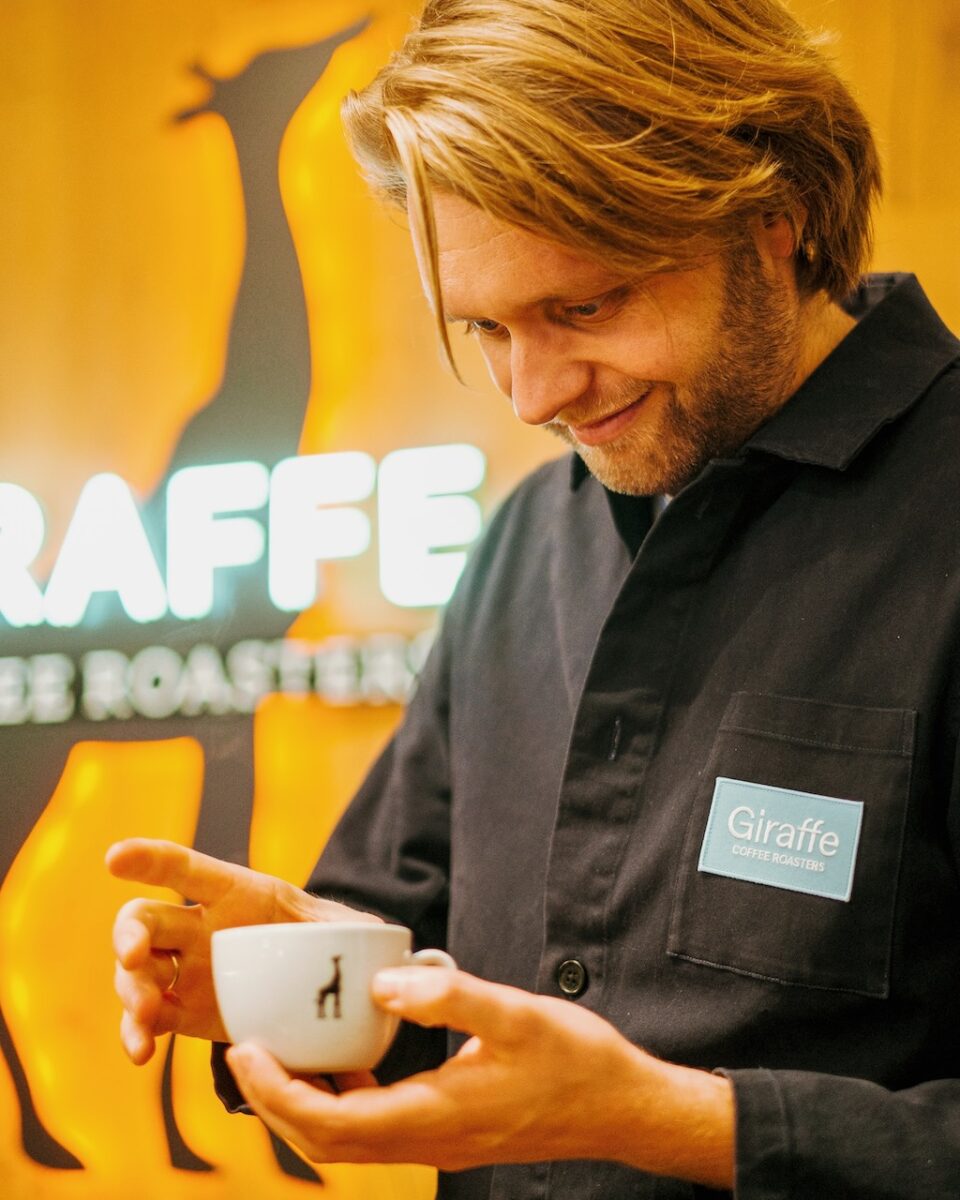
Sharing love of coffee
The story of Giraffe Coffee can’t be complete without mentioning how Maarten crossed paths with Mark, the other co-founder.
In 2010, Maarten was on the coaching staff for the Netherlands delegation for the World Barista Championship. When the team was training at a Rotterdam office space, remodeled to look exactly like the competition venue, Maarten met Mark, then a barista at the espresso bar in the same building.
“Mark would come to see our training after work and stayed until late at night. He grew fascinated by what we were doing because it looked totally different from his job at the espresso bar.”
Mark already knew a lot about coffee. But just like Maarten, he was eager to learn. So they started going on trips together to coffee shops abroad. As partnership developed between the two during these tours, they came up with an idea of trying their hands at roasting.
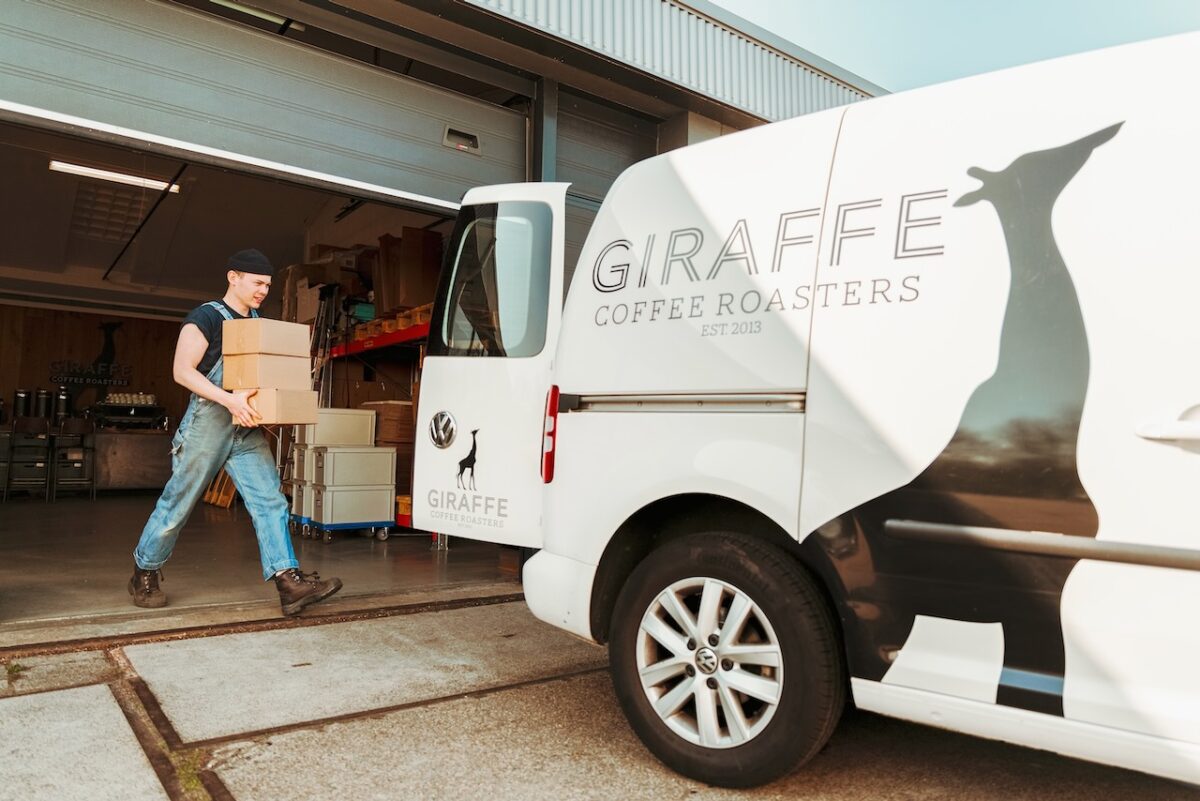
Later on, Maarten co-founded Giraffe Coffee with Mark, who was also a trainer at a roasting school. They started off by renting a roaster. But in less than two years, orders became too large for their small van to transport, which prompted them to open their own roastery in Rotterdam. Now, they are the ones who rent out a roaster to young up-and-comers.
“In our early days, my mother, who is a food lover, told me my taste was too elitist and sophisticated, and that I wouldn’t succeed if I started a coffee business. She said people in the Netherlands wouldn’t understand specialty coffee. But my resolve was unchanged. I was confident that many people here would like our coffee because the coffee culture had been growing here.”
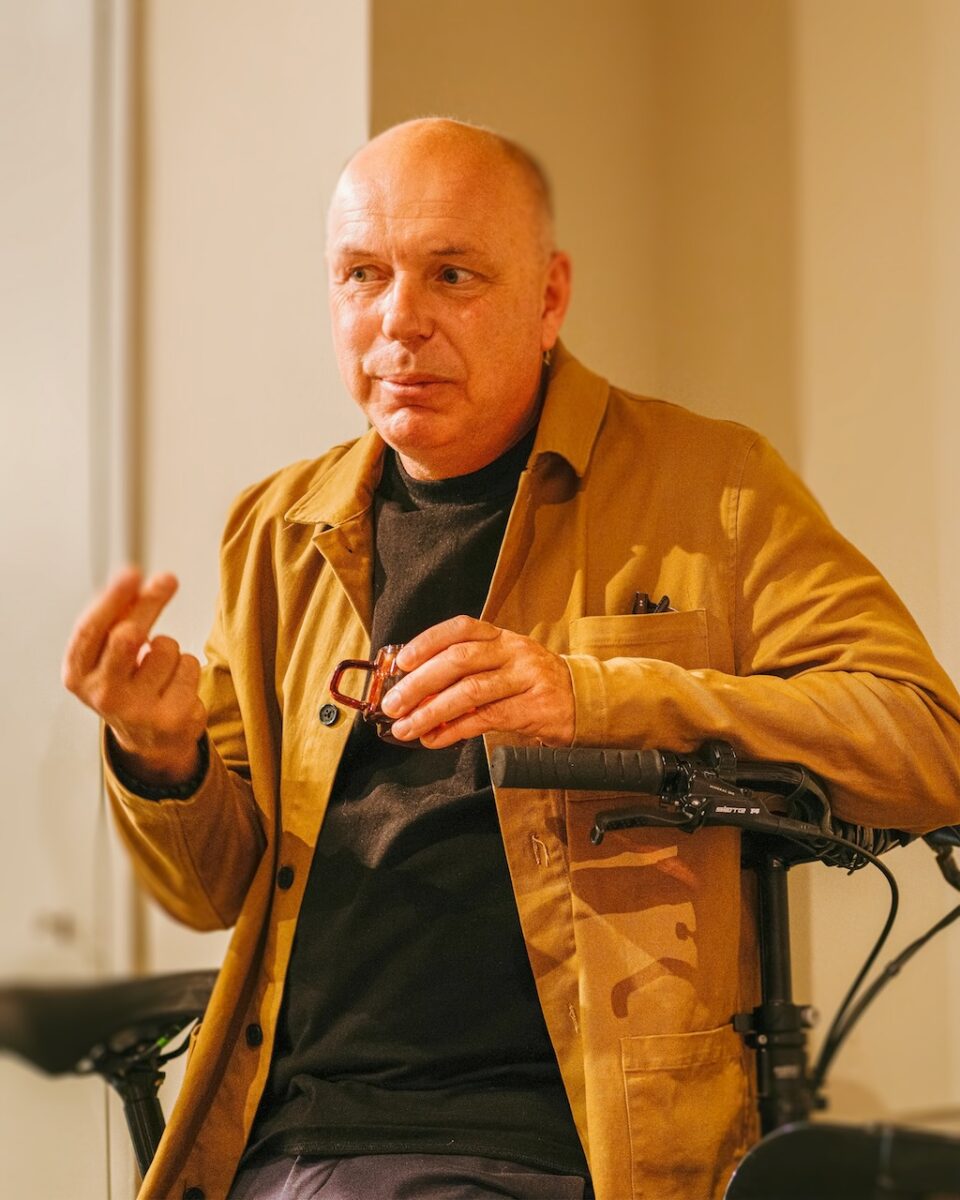
Maarten also had an asset he gained as a food journalist. When reviewing a restaurant, for example, he focused on the questions of who would like the place and for what occasion it was suitable, rather than sharing his likes and dislikes.
“When I guide people through different coffees, I start by finding out their taste. Then, I lead them to a coffee that’s slightly better than what they like now. You could say I am a travel agency for tastes. I try to figure out people’s current favorite and consider what kind of coffee they will like a couple of years down the line.
When it comes to food, not everyone likes a high-end restaurant at a luxury hotel. Some people opt for a vibrant, urban place while a 14-year-old might prefer a hamburger joint. I want to help customers find the coffee they like the most at that moment. By doing so, I hope they will understand the depth and nuances of coffee.”
It is no easy task to put tastes into words or gain a clear insight into someone else’s preference. But here again, his experience as a food journalist proved to be of great use.
“If you know 30 words to describe snow, you can distinguish between 30 kinds of snow. They say words help you understand the world. The same can be said for tastes. The more words you know to describe tastes, the better you are able to find and express them.”
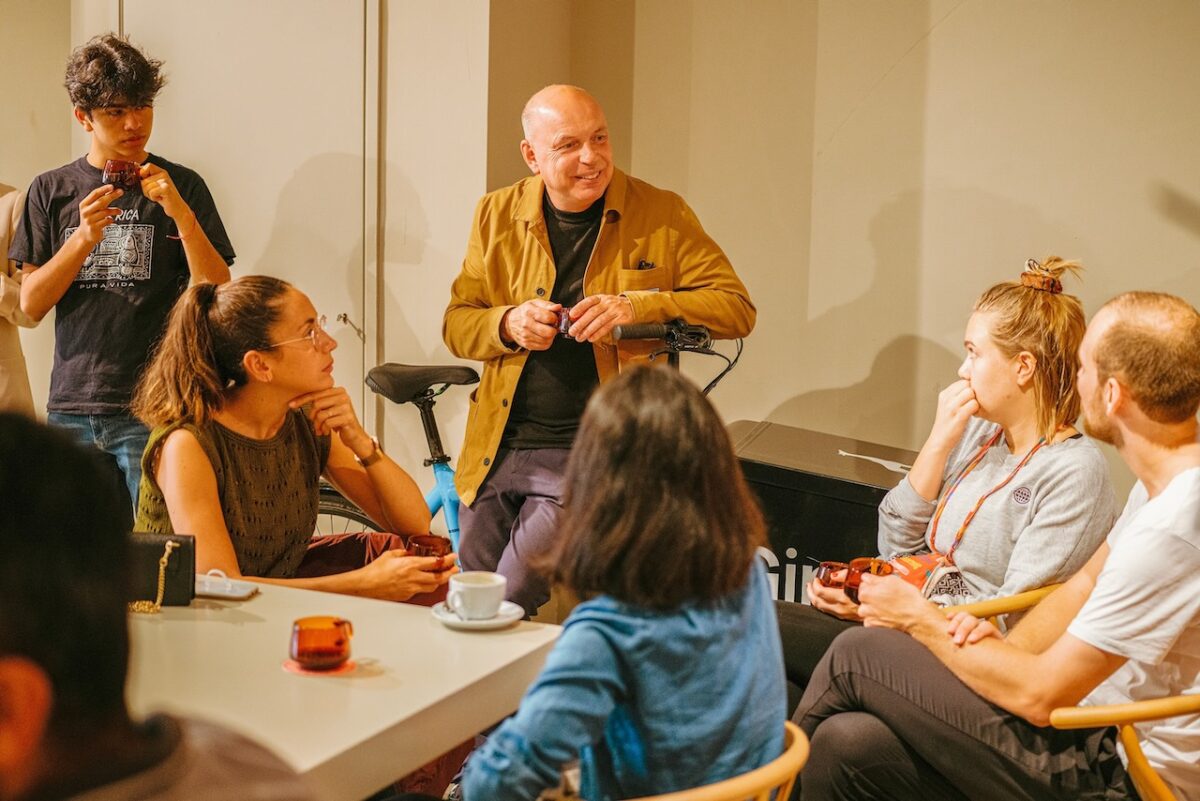
However, Maarten also notes that having sophisticated sensibilities can also be a disadvantage. If you use words too difficult for others, you risk coming off as snobbish and pushing them away.
“Back in the day, that kind of pretentiousness seemed to be rampant in the specialty coffee world. But that’s not the right attitude for someone who shares the love of coffee with people. It’s important to have the willingness to teach a new culture, just as teachers take their students to a museum and share their love of art by explaining the exhibits.”

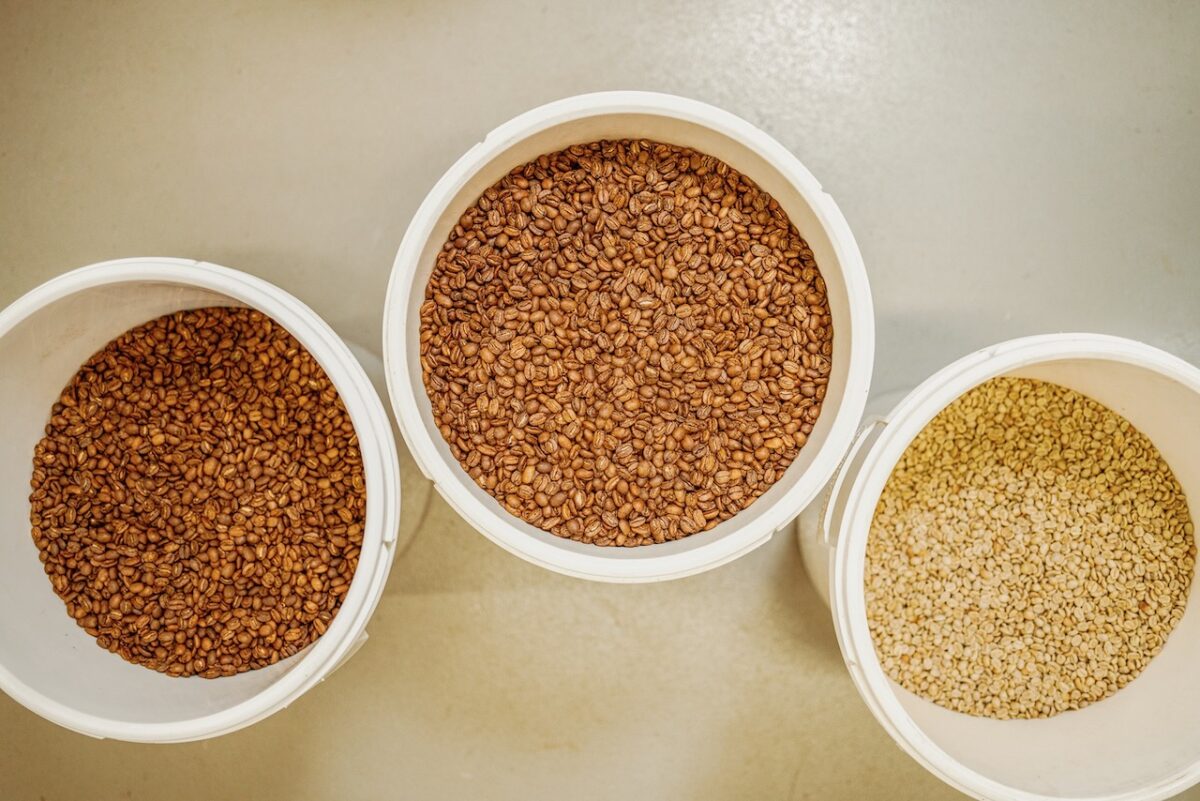
Stay humble, aim higher
Giraffe Coffee provides free coffee training sessions to restaurants and other clients. The store also organizes workshops for general consumers, too. With a strong sense of mission as a coffee evangelist, Maarten does not shy away from pointing out problems with the industry.
“I see two major issues. First, as large-scale roasters have begun to join the specialty coffee market, generic, not-so-special coffees are being sold as specialty coffee. Second, some small-scale roasters use low-quality beans because of their poor sourcing skills.
These are critical problems. Roasters, myself included, must be picky and pursue quality. I think the biggest enemy of specialty coffee is the specialty coffee scene itself.”
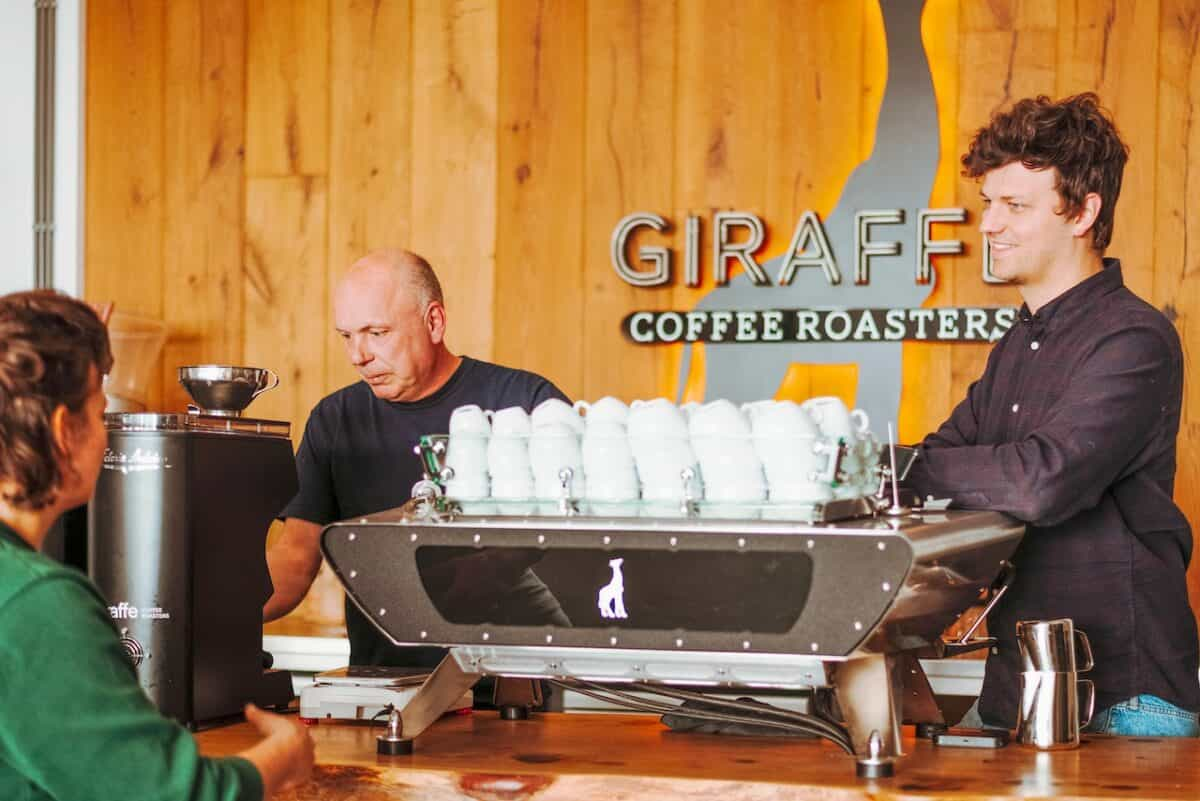
This sense of crisis is the flip side of Maarten’s desire to find the gem of coffee.
“Delicious coffee has the power to move you to tears. The emotional experience leaves a deep impression in my heart and takes me to the next level. That said, when I select coffees for Giraffe, I need to have a business perspective, too, and find a coffee for a blend, for instance. And a professional point of view has to come in when we cup. Still, one of my sourcing criteria is whether I feel emotional or not.
What motivates me is to share the love of coffee and the emotions it stirs, and to see the glow in the eyes of people when they drink coffee. I also share the love of food with younger colleagues. In that process, I learn things from them, too. So it’s never a one-way street. That’s what makes it interesting.”
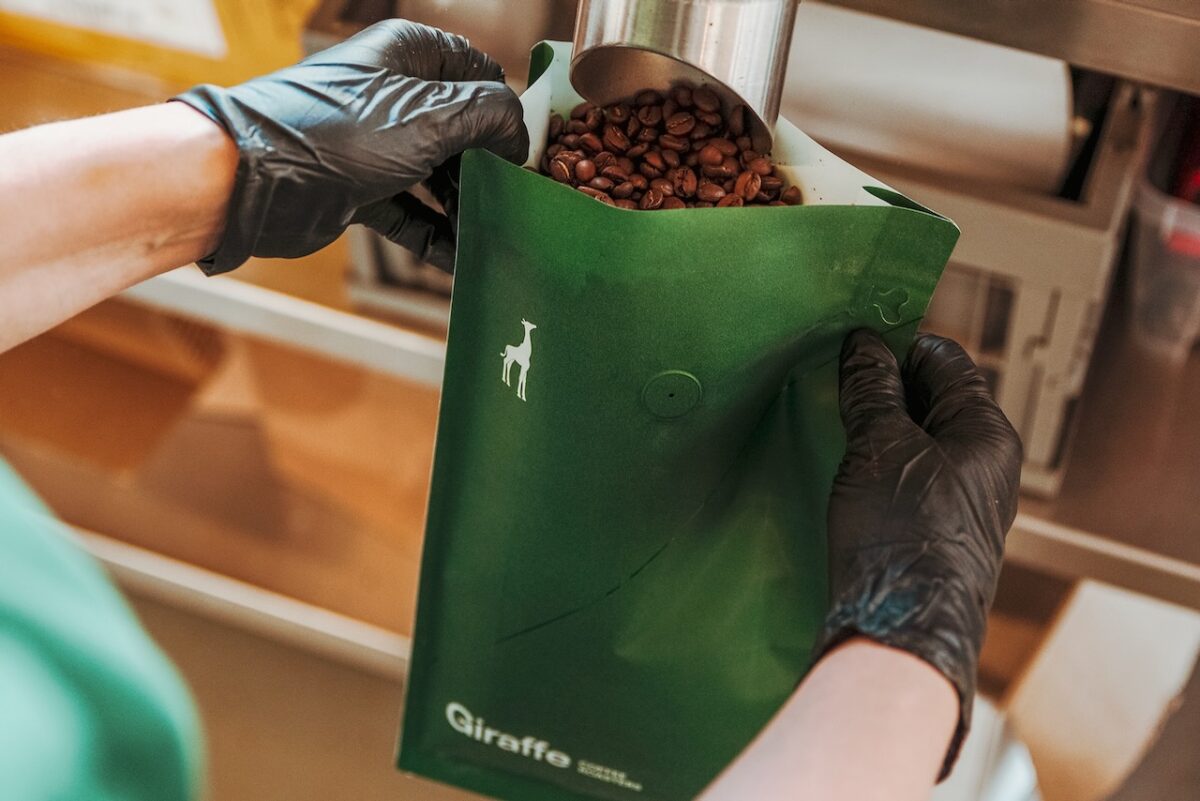
Like a giraffe roaming in a vast expanse of savanna on the hunt for favorite acacia trees, Giraffe Coffee has sought out the dazzling gem of coffee all these years. The journey will soon enter its 10th year. Inquisitive by nature, Maarten was always tempted to make a career change after around 10 years on the same job. But at 55, he is breaking with that personal precedent.
“Even today, I receive a flood of new information like experimental approaches by producers. The quality of green coffee has been improving, too. There are still plenty of things I don’t know about the coffee world, especially origins. Recently, I was in Costa Rica, and learned about a lot of F-1 hybrids. I stay humble to this day, knowing that I need to learn a whole lot more. It takes at least 20 years to know everything about Ethiopian coffee alone. And still, I’m trying to learn about coffees from all over the world.”
Originally written in Japanese by Mieko Karube
Edited by Tatsuya Nakamichi
Photos by Joep.photo

MY FAVORITE COFFEE
If I have to pick one, my favorite is Huila, Colombia. Everyone can enjoy it, from coffee aficionados to casual drinkers. Yet, it has top-tier taste by all accounts.
It’s difficult to define the best coffee because people have different preferences. But for me, the best coffee is the one that most vividly expresses the character of its origin.

Giraffe Coffee Roasters
- [Open]
- Monday - Friday: 8:30 - 17:00

